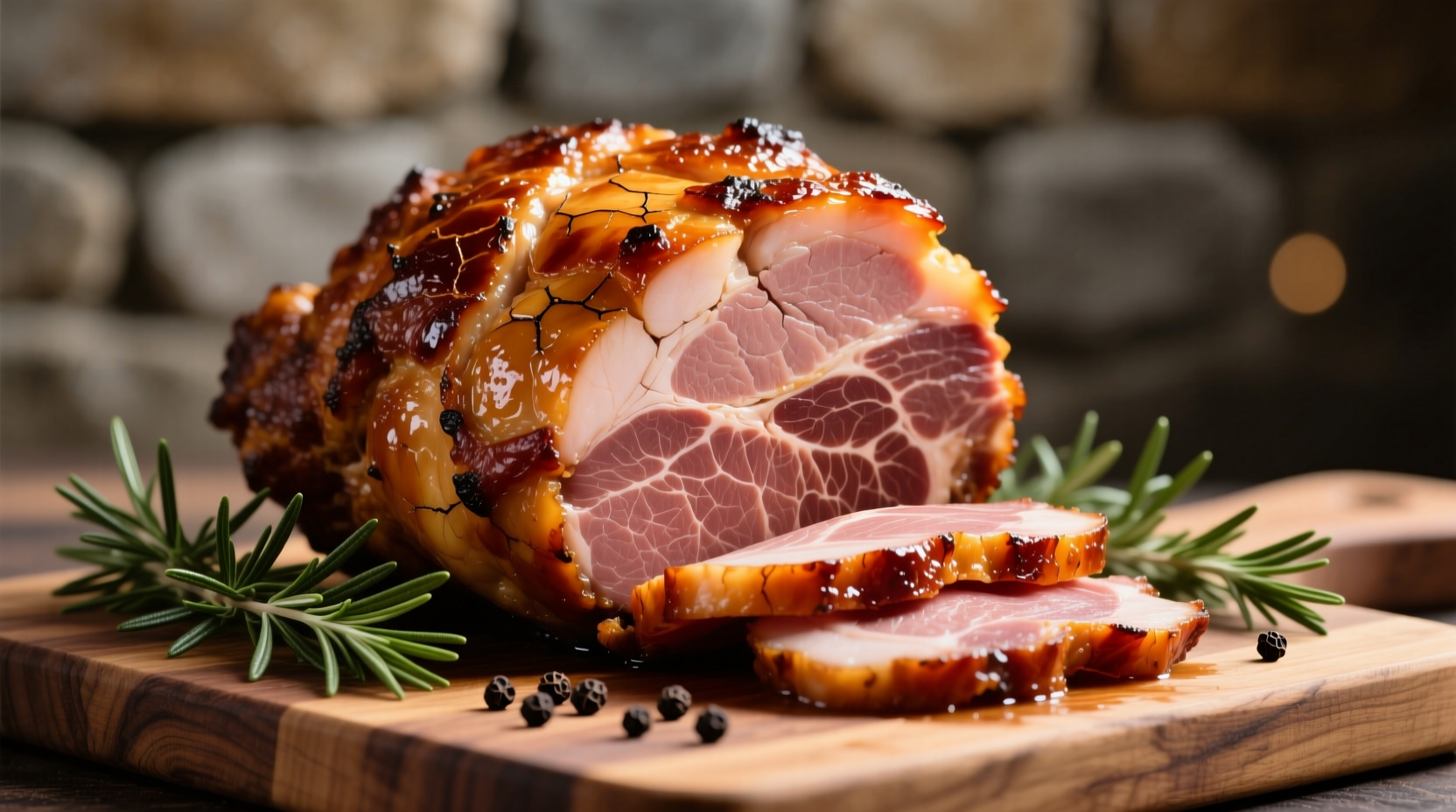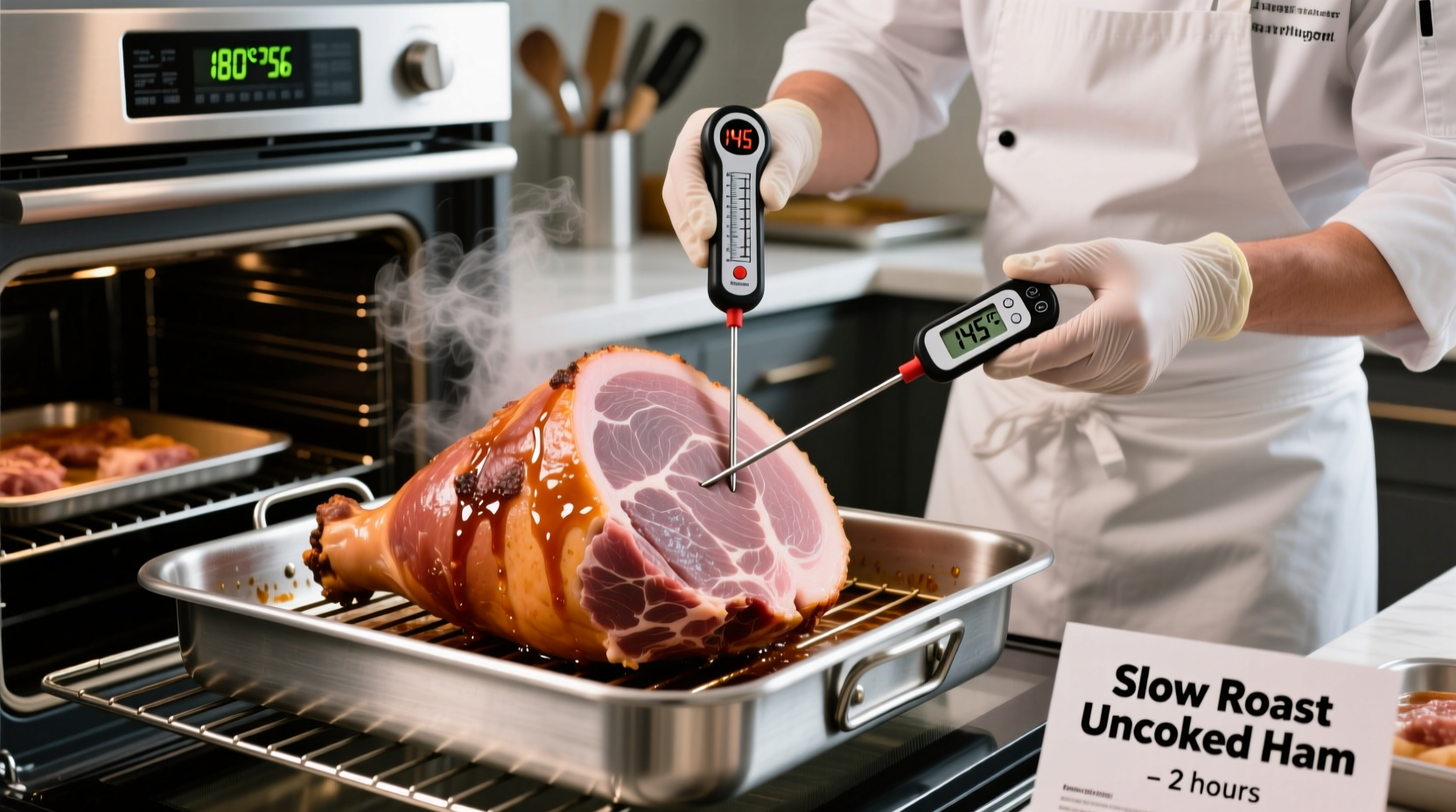The Complete Guide to Cooking Uncooked Ham Safely and Deliciously
Nothing impresses guests like a perfectly cooked ham for holiday meals or special occasions. But if you've ever ended up with dry, tough, or undercooked ham, you know the frustration. This comprehensive guide gives you everything you need to transform raw ham into a succulent centerpiece that's both safe to eat and bursting with flavor.
Understanding Your Uncooked Ham
Before you start cooking, it's crucial to identify what type of uncooked ham you have. Not all hams are created equal, and cooking methods vary significantly based on the product.
| Ham Type | Characteristics | Cooking Temperature | Cooking Time Per Pound |
|---|---|---|---|
| Fresh Ham | Raw, uncured pork leg | 325°F | 22-25 minutes |
| Cured but Uncooked | Pink color, salty taste | 325°F | 18-20 minutes |
| Semi-Cooked | Partially cooked during processing | 325°F | 15-18 minutes |
According to the USDA Food Safety and Inspection Service, fresh hams must reach an internal temperature of 145°F with a 3-minute rest period to be considered safe for consumption. This critical food safety standard prevents potential foodborne illnesses while preserving optimal texture.
Essential Preparation Steps
Proper preparation makes all the difference between mediocre and magnificent ham. Follow these steps before your ham ever touches heat:
- Thaw completely if frozen (allow 4-5 hours per pound in refrigerator)
- Remove packaging and rinse surface under cool water
- Pat dry thoroughly with paper towels
- Score the surface in a diamond pattern (¼ inch deep)
- Apply seasoning or prepare for glazing

Step-by-Step Cooking Process
Now for the main event—cooking your ham to perfection. This method works for both fresh and cured uncooked hams:
1. Preheat and Prepare
Preheat your oven to 325°F. Place ham on a rack in a roasting pan with the fat side up. Add 1-2 cups of liquid (water, broth, or apple juice) to the bottom of the pan to prevent drying.
2. Initial Cooking Phase
Cook uncovered for the first 15-20 minutes to help render fat. Then reduce to the recommended cooking time of 18-20 minutes per pound. Baste every 30 minutes with pan juices.
3. Temperature Monitoring
Insert a meat thermometer into the thickest part, avoiding bone. Check temperature when you're about 75% through the estimated cooking time. The USDA requires a minimum internal temperature of 145°F for safety.
4. Glazing (Optional but Recommended)
Apply your glaze during the last 20-30 minutes of cooking. Popular combinations include:
- Brown sugar, mustard, and pineapple juice
- Honey, cloves, and orange zest
- Maple syrup with bourbon and spices
5. Resting Period
Remove ham from oven when it reaches 140°F (it will continue cooking). Tent loosely with foil and let rest for 3-10 minutes before carving. This allows juices to redistribute throughout the meat.
Avoiding Common Cooking Mistakes
Even experienced cooks make these ham preparation errors. Here's how to avoid them:
- Skipping the thermometer: Visual cues alone can't confirm doneness. Always use a digital thermometer.
- Overcooking: Ham continues cooking while resting. Remove at 140°F to reach 145°F after resting.
- Glazing too early: Sugary glazes burn if applied too soon. Wait until the last 20-30 minutes.
- Cutting too soon: Resting is crucial for juicy results. Never carve immediately after cooking.
Storage and Leftover Tips
Proper storage ensures your cooked ham remains safe and delicious:
- Refrigerate within 2 hours of cooking
- Slice or dice leftovers for faster cooling
- Store in airtight container for up to 3-4 days
- Freeze for up to 2 months in vacuum-sealed packaging
- Reheat to 140°F internal temperature before serving
According to FoodSafety.gov, cooked ham should be consumed within 3-4 days when refrigerated at 40°F or below. For extended storage, freezing is recommended but may affect texture slightly upon thawing.
Why Traditional Methods Have Evolved
Ham cooking techniques have changed significantly over the decades. In the 1950s, many cooks used much higher temperatures (350°F+) with longer cooking times, often resulting in dry meat. Modern food science has revealed that lower temperatures with precise timing yield superior results while meeting safety standards.
The USDA updated its recommended cooking temperature for pork from 160°F to 145°F in 2011 based on research showing this lower temperature is equally safe while preserving moisture. This change reflects improved understanding of food safety science and has revolutionized ham preparation.
When to Choose Alternative Cooking Methods
While oven roasting is standard, these alternative methods work well in specific situations:
- Slow cooker method: Ideal for smaller hams (under 5 pounds) when you need hands-off cooking
- Grilling: Best for warm weather with indirect heat and wood chips for smoky flavor
- Sous vide: Perfect for precise temperature control, though requires additional searing
Remember that cooking times vary significantly with alternative methods. Always verify internal temperature rather than relying solely on time estimates.











 浙公网安备
33010002000092号
浙公网安备
33010002000092号 浙B2-20120091-4
浙B2-20120091-4